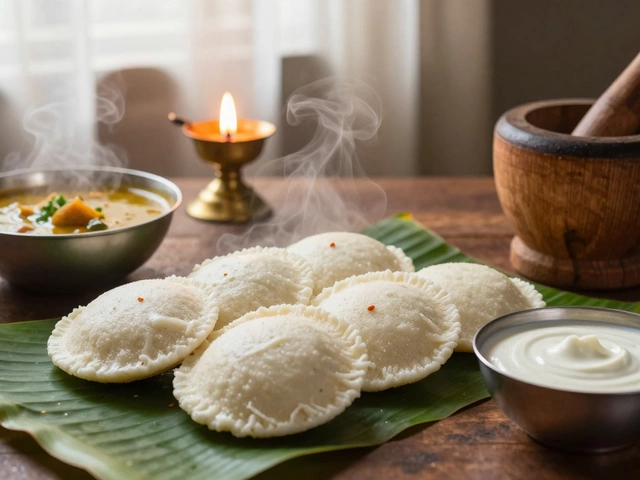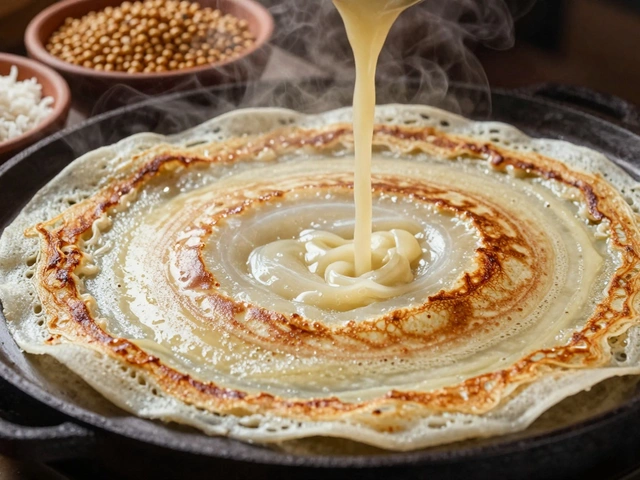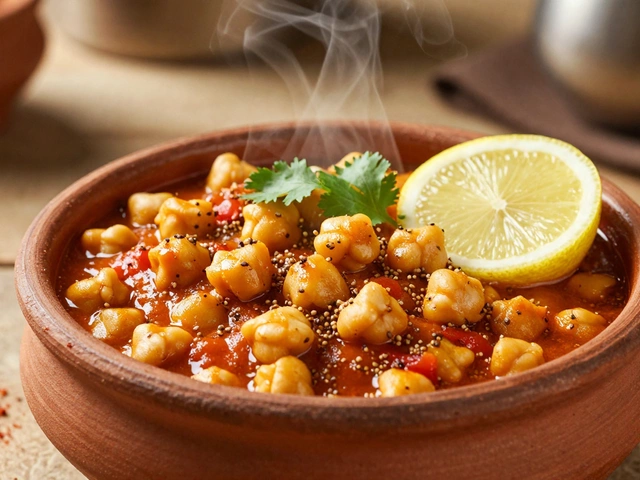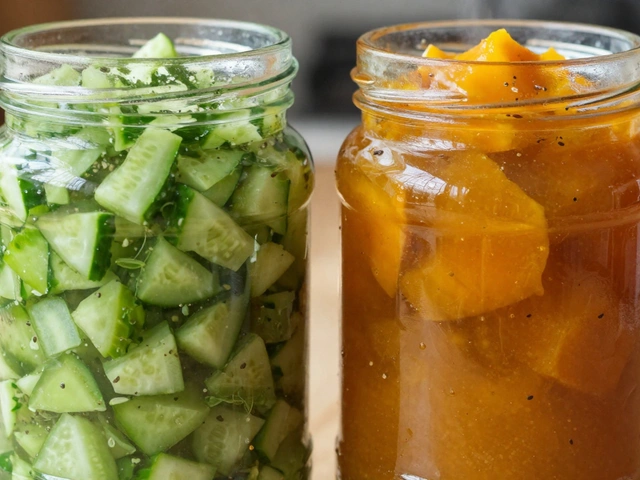So, you've got a gallon of milk and you're itching to turn it into something delicious. Paneer, a favorite in many kitchens for its mild flavor and versatility, is a great choice. But before diving in, you might be wondering, how much paneer can you actually get from that one gallon?
Typically, from a gallon of regular whole milk, you can expect to produce about 1.2 to 1.5 pounds of paneer. This might not seem like a lot given the starting volume of milk, but it’s all about the transformation process! The yield depends on factors like the fat content of your milk and how tightly you press the curds.
Using whole milk is crucial here because the fat content contributes to the richness and texture of your paneer. Skim milk will give you less paneer, and it won’t be as creamy. So, if you're looking for that authentic soft texture, whole milk is the way to go.
- Getting Started with Paneer Making
- Expected Yield from One Gallon of Milk
- Tips for a Better Paneer
- Common Adjustments and Creative Spins
Getting Started with Paneer Making
Alright, let's jump into the world of homemade paneer. It's not as complicated as you think, and you don’t need a fancy culinary degree to whip up this delightful cheese at home. All you really need is some milk, an acid like lemon juice or vinegar, and a bit of patience.
First off, bring your milk to a gentle boil in a large pot. Stir often to avoid any burning at the bottom. Once it hits a rolling boil, lower the heat and add your acid. The milk will start to curdle almost instantly. It’s like magic! The acid helps separate the curds from the whey, which is the essential part of making cheese.
“The art of making cheese is fundamentally the curdling of milk. Everything else is just a wonderful embellishment,” says renowned chef and cheese enthusiast, Gordon Ramsay.
After the milk has curdled, it’s time to strain those curds. Line a colander with cheesecloth or a thin kitchen towel over a large bowl. This will catch the curds while the whey drains off. Be sure to rinse the curds under cold water to remove any residual acid. It’s an important step if you want a smooth and neutral taste.
- Heat milk and bring it to a boil.
- Add acid and watch the magic happen.
- Strain the milk using a cheesecloth or kitchen towel.
- Rinse and press the curds to remove excess whey.
Pressing is key to determining the texture of your homemade paneer. If you press it with a weight for about 30 minutes, you’ll get a firm block that holds its shape well, perfect for cooking.
Keep in mind, different milks can lead to slightly different results. Whole milk is generally preferred for that creamy taste, but experimenting with different kinds can be part of the fun!
Expected Yield from One Gallon of Milk
Alright, let's get to the juicy details—how much paneer can you actually squeeze out of a gallon of milk? If you're using whole milk, which most home chefs prefer for its richness, you can generally expect about 1.2 to 1.5 pounds of paneer. This estimate assumes you’re starting with fresh, full-fat milk.
The process of making homemade paneer involves boiling the milk and then adding an acid, like lemon juice or vinegar, to curdle it. Once the curds form, they’re strained from the whey and pressed to form a solid block of cheese. The yield depends on a few key factors:
- Fat Content: Higher fat content, like in whole milk, generally results in more paneer.
- Acid Type: Different acids might affect how firmly the paneer sets.
- Pressing Technique: The firmer you press your curds, the denser your paneer block, impacting the final weight.
Some folks try using skim milk either for dietary reasons or to experiment. While you can still make paneer from it, the yield will be lower, and the texture won’t be as creamy.
| Type of Milk | Approx. Paneer Yield (lbs) |
|---|---|
| Whole Milk | 1.2 - 1.5 |
| 2% Milk | 1.0 - 1.3 |
| Skim Milk | 0.8 - 1.0 |
This chart gives you a quick look at what you’re dealing with when choosing your milk type. If you’re looking for the best results in your homemade paneer adventure, stick to whole or at least 2% milk. Remember, more fat means more flavor and a better texture in your final dish.

Tips for a Better Paneer
Making paneer at home might feel like a chemistry experiment, but with a few tricks up your sleeve, it's a breeze! Here are some handy tips to ensure your homemade paneer turns out perfect every time.
Get the Right Milk: Always opt for whole milk. The fat in whole milk is what gives paneer its creamy texture. More fat equals a richer and softer cheese.
- Don't Rush It: Once you've added the acid (lemon juice or vinegar) to coagulate the milk, let it sit. This resting period is crucial as it helps the curds form properly. Give it at least 10 minutes.
- Gentle Stirring: When you see the milk curdling, stir gently. You don't want to break the curds into tiny granules. Gentle stirring helps form larger, better curds.
- Correct Temperature: For paneer, about 200°F (or close to boiling) is ideal. Use a thermometer if you have one; otherwise, aim for hot but not vigorously bubbling.
- Acid Choice: Lemon juice is most common for its refreshing taste, but vinegar works too. Use whatever you have at hand.
Pressing the Curds: Place your curds in cheesecloth and place a heavy object on top. Books, water-filled pans, or any stable weight work well. The longer you press, the firmer your paneer will be.
Not Too Tight : Be careful not to squeeze too much. If you press the life out of your paneer, it might become rubbery.
Storage: Fresh paneer is best used quickly, but you can keep it in the fridge in a bowl of water to maintain its softness. Consume it within a week for the best flavor and texture.
If done right, you’ll have approximately 1.2 to 1.5 pounds of delicious paneer out of that gallon. With these tips, your homemade paneer should surpass store-bought varieties in flavor and freshness!
Common Adjustments and Creative Spins
Making paneer at home means you've got tons of room to play around and find what suits your taste. If you've tried the basic recipe and you're feeling adventurous, let’s explore some tweaks and creative ideas to elevate your homemade cheese!
First off, consider adjusting the texture of your homemade paneer. If you'd like it firmer, press the curds longer and use more weight. A couple of weighty books on top of your pressing setup can do wonders. Want it softer? Just reduce the pressing time.
For those who love a bit of zest and flavor, adding ingredients during the curdling process can open up new taste dimensions. Fresh herbs like cilantro, mint, or even a hint of chili flakes can be mixed into the curds before pressing. For variety, a sprinkle of turmeric will not only add health benefits but also give a lovely golden tint to your paneer.
In addition to the regular method, some folks enjoy adding a pinch of salt to the milk before bringing it to a boil. This seasons the paneer from the inside out, great for when you want to snack on it directly without any further seasoning.
Finally, for those into numbers, here's a fun comparison for your milk conversion efficiency as you play around with your recipe. You might notice slight differences based on whether you incorporate any extra ingredients:
| Variation | Expected Yield |
|---|---|
| Basic Paneer | 1.2 to 1.5 pounds |
| With Herbs | Average 1.4 pounds |
| Turmeric & Salt | Same yield, spiced up flavor |
These tweaks ensure that you're not just making paneer, but crafting a cheese that reflects your taste and gives you a delicious edge at your next meal. Experimenting is half the fun, so don't be afraid to try something new!





